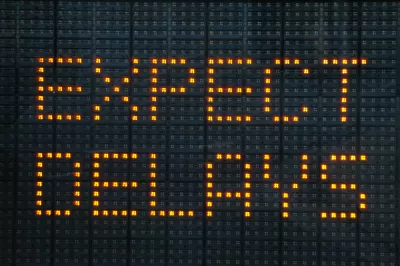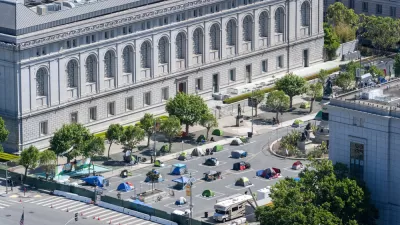A pair of interactive maps and a report compare access to opportunity in two very different neighborhoods. In both places, residents confront "friction of distance" and feel their input on public decision-making is limited.

Rachel Kaufman covers a pair of interactive maps and a report from the UNC Center for Community Capital and JPMorgan Chase that tease out the "zip code effect" on access to economic opportunity. "The purpose of the report, as its authors said, was to 'shed light on which aspects of access to opportunity are universal — i.e. seem to be present regardless of setting — and which are more a matter of local particularities.'"
The project looks at two neighborhoods, Columbia Parc in New Orleans, and Protrero Terrace and Annex in San Francisco, with very divergent socio-economic contexts. Despite the latter's position in a wealthy area, Kaufman writes, "residents still struggle: no bus line serves Protrero Annex, and the lines serving the Terrace have been cut over time. The nearest bank and credit union branches are more than a mile away, so residents end up using local ATMs (and paying the associated fees) or check-cashing stores."
Residents of Columbia Parc face similar challenges. One lesson: the "friction of distance" that residents perceive between two points matters more than the distance in miles. And without adequate information and awareness, social networks, and cultural competency from service providers, even neighborhoods in wealthy regions can become isolated from economic drivers and political processes that affect them.
FULL STORY: New Maps Show Access to Opportunity Isn’t Just Physical

Maui's Vacation Rental Debate Turns Ugly
Verbal attacks, misinformation campaigns and fistfights plague a high-stakes debate to convert thousands of vacation rentals into long-term housing.

Planetizen Federal Action Tracker
A weekly monitor of how Trump’s orders and actions are impacting planners and planning in America.

In Urban Planning, AI Prompting Could be the New Design Thinking
Creativity has long been key to great urban design. What if we see AI as our new creative partner?

King County Supportive Housing Program Offers Hope for Unhoused Residents
The county is taking a ‘Housing First’ approach that prioritizes getting people into housing, then offering wraparound supportive services.

Researchers Use AI to Get Clearer Picture of US Housing
Analysts are using artificial intelligence to supercharge their research by allowing them to comb through data faster. Though these AI tools can be error prone, they save time and housing researchers are optimistic about the future.

Making Shared Micromobility More Inclusive
Cities and shared mobility system operators can do more to include people with disabilities in planning and operations, per a new report.
Urban Design for Planners 1: Software Tools
This six-course series explores essential urban design concepts using open source software and equips planners with the tools they need to participate fully in the urban design process.
Planning for Universal Design
Learn the tools for implementing Universal Design in planning regulations.
planning NEXT
Appalachian Highlands Housing Partners
Gallatin County Department of Planning & Community Development
Mpact (founded as Rail~Volution)
City of Camden Redevelopment Agency
City of Astoria
City of Portland
City of Laramie





























